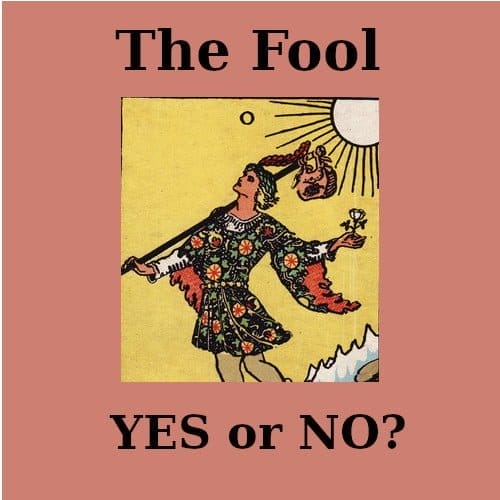Among the various techniques utilized in tarot reading, the Yes or No readings stand out for their simplicity and directness. In this article, I’ll share some of my personal experiences, outline the pros and cons of one-card Yes or No readings, and guide you on how to perform them effectively. Understanding yes or no tarot meanings can prove a great benefit.
Personal Experience
My journey with tarot began over a decade ago, and one of the most frequent requests from querents (clients) is for clear, concise answers. Yes or No tarot readings, where a single card is drawn to answer a specific question. These readings can cut through the complexity of traditional spreads, offering a straightforward answer that is easy for querents to digest.
What is a Yes or No Tarot Reading?
A Yes or No tarot reading aims to provide a simple answer to a specific question. The method involves asking the tarot deck a closed question that can ideally be answered with a “yes” or “no.” This type of reading uses a predetermined set of rules to interpret the cards as affirmative, negative, or even neutral.
How to Do a One-Card Yes or No Reading
- Frame Your Question: Ensure your question is clear and formulated to receive a “yes” or “no” response. Ambiguous questions can lead to confusing readings.
- Shuffle and Draw: Shuffle the deck while focusing on your question. When you feel ready, draw a single card.
- Interpret the Card: Establish in advance which cards mean “Yes,” or “No”. This interpretation can vary between readers but is often based on the nature of the card’s imagery and traditional meanings.
Summary List of major Yes or No Meanings
| Card Name | Yes/No | Reasoning / Notes |
|---|---|---|
| 0. The Fool | Yes | Represents new beginnings but can also indicate uncertainty. |
| 1. The Magician | Yes | Symbolizes power and mastery, indicating a positive outcome. |
| 2. The High Priestess | Yes | Suggests hidden knowledge and secrets – a cautious yes |
| 3. The Empress | Yes | Denotes abundance and creativity, a favorable sign. |
| 4. The Emperor | Yes | Stands for authority and stability, likely a positive response. |
| 5. The Hierophant | Yes | Traditionally associated with wisdom and guidance. |
| 6. The Lovers | No | Indicates choices, often involving dilemmas. |
| 7. The Chariot | Yes | Represents victory and determination, pointing to a yes. |
| 8. Strength | Yes | Conveys courage and moral strength, a positive indicator. |
| 9. The Hermit | No | Suggests contemplation and solitude, typically introspective. |
| 10. Wheel of Fortune | Yes | Implies change and cycles, but leaning towards positive. |
| 11. Justice | Yes | Represents balance and fairness, typically a yes. |
| 12. The Hanged Man | No | Stands for pause and reflection, suggesting waiting. |
| 13. Death | No | Symbolizes an ending, typically seen as negative. |
| 14. Temperance | Yes | Indicates balance and moderation, a positive sign. |
| 15. The Devil | No | Associated with bondage and limitations, generally a no. |
| 16. The Tower | No | Implies destruction and upheaval, a negative outcome. |
| 17. The Star | Yes | Denotes hope and inspiration, usually a positive response. |
| 18. The Moon | No | Represents confusion and illusion, likely unclear. |
| 19. The Sun | Yes | Symbolizes success and vitality, strongly positive. |
| 20. Judgment | Yes | Suggests rebirth and inner calling, likely a yes. |
| 21. The World | Yes | Represents completion and accomplishment, definitely a yes. |
Example of Card Meanings
- Yes Cards: The Empress, The Sun, Ace of Wands — these generally have positive connotations.
- No Cards: The Tower, Ten of Swords, Five of Cups — these cards typically carry negative imagery.
Pros of One-Card Yes or No Readings
- Simplicity: These readings are quick and straightforward, making them ideal for those seeking quick guidance.
- Focus: Limiting the reading to one card allows for deep reflection on a single aspect of a situation.
- Clarity: It cuts through the ambiguity of more complex spreads, offering a clear answer.
Cons of One-Card Yes or No Readings
- Limitation in Depth: These readings do not provide detailed insights into how or why things will unfold.
- Over-Simplification: Life’s issues are often complex, and a simple Yes or No may not fully capture or address all underlying factors.
- Potential for Misinterpretation: Without a broader context, the answers can be misleading or too simplistic.
Tips for Accurate Readings
- Set Clear Intentions: Be clear about what you are asking.
- Use an Adapted Approach: Depending on the situation, combine yes/no readings with more detailed spreads to gain comprehensive insights.
- Practice Regularly: Familiarity with your deck enhances the accuracy of your readings.
Final Thoughts

While understanding yes or no tarot card meanings readings offer a unique and valuable tool for gaining quick insights, they should be used judiciously. Remember, the tarot is a guide, not a definitive answer provider. It encourages reflection and introspection, which can be somewhat constrained in a one-card reading. By understanding the limitations and best practices, you can use these readings as a powerful supplement to your spiritual and decision-making toolkit. Happy reading!














